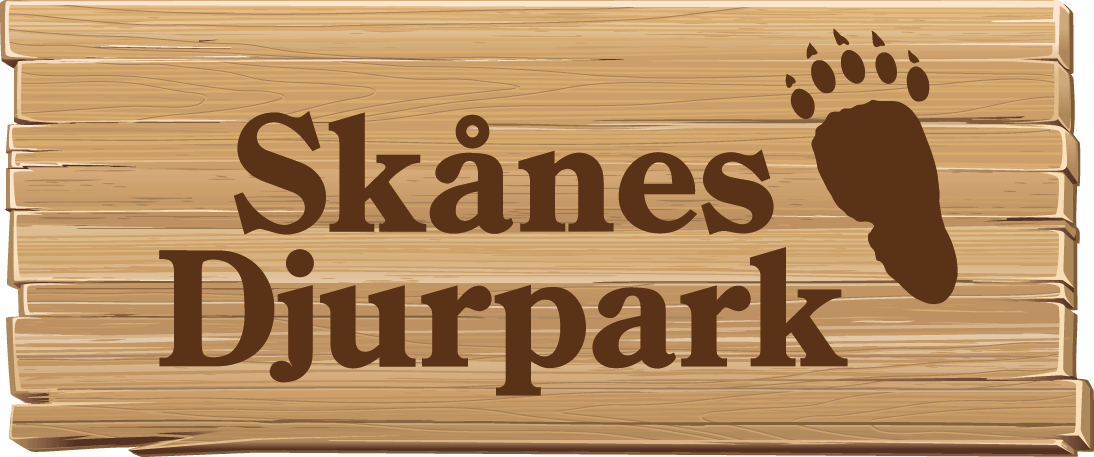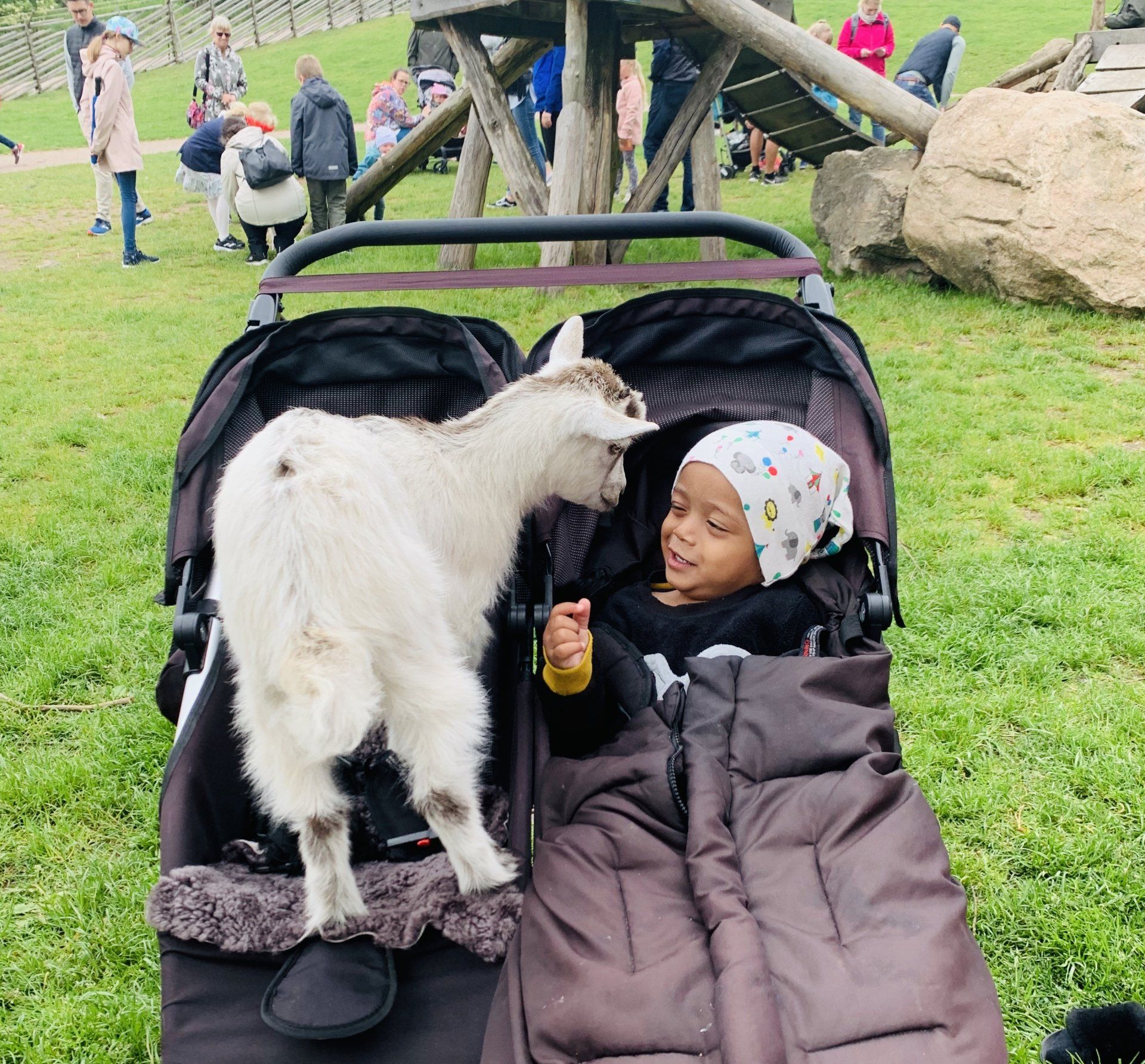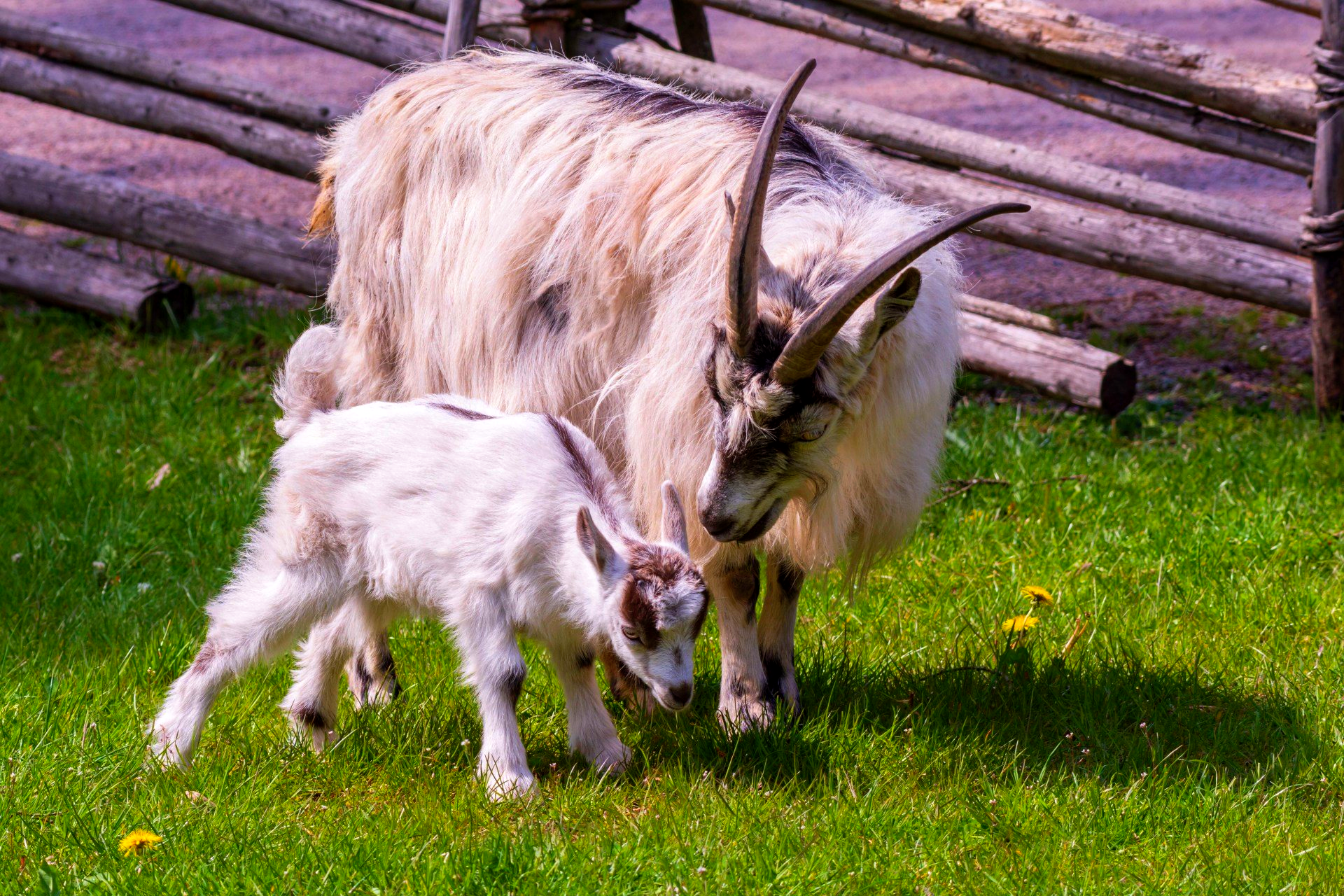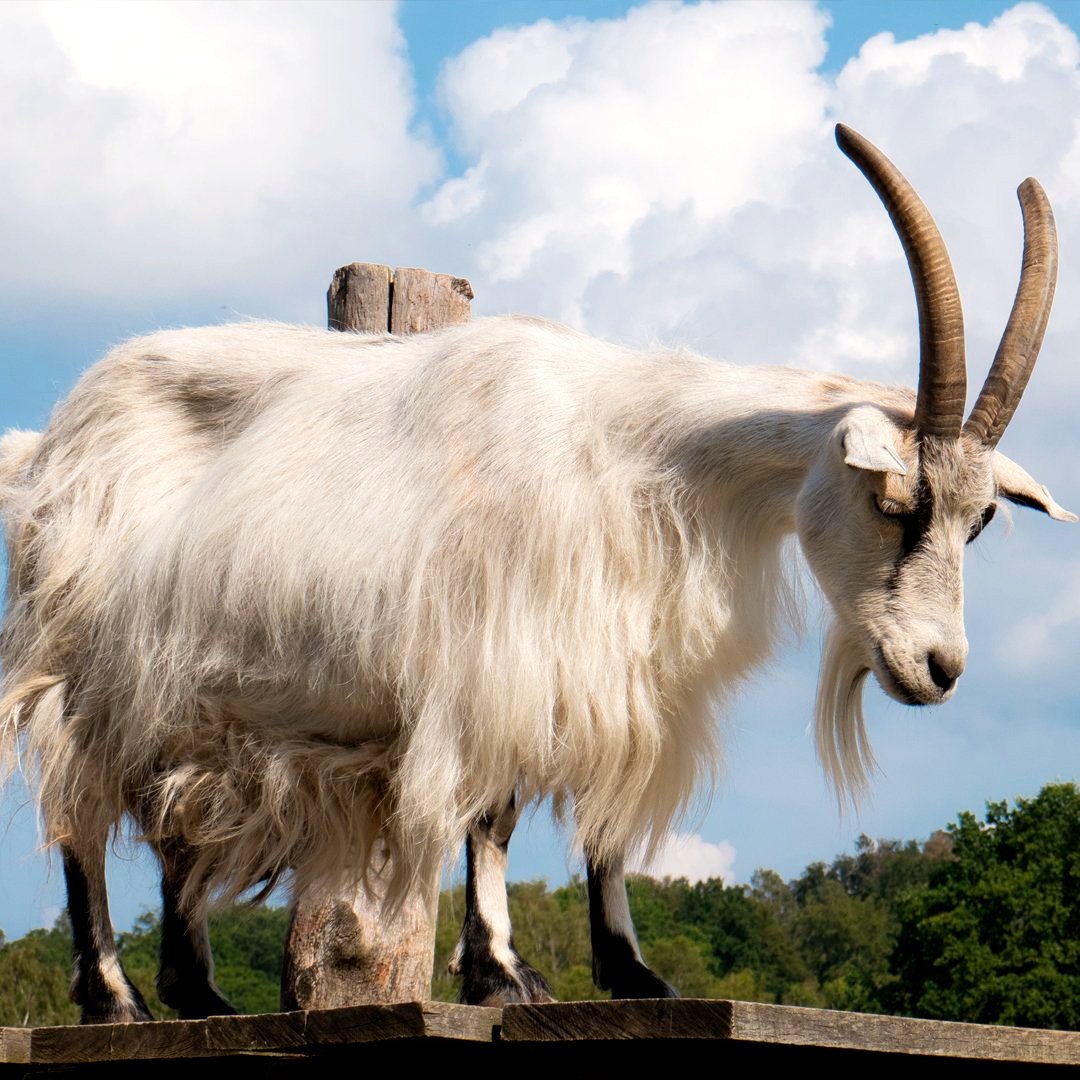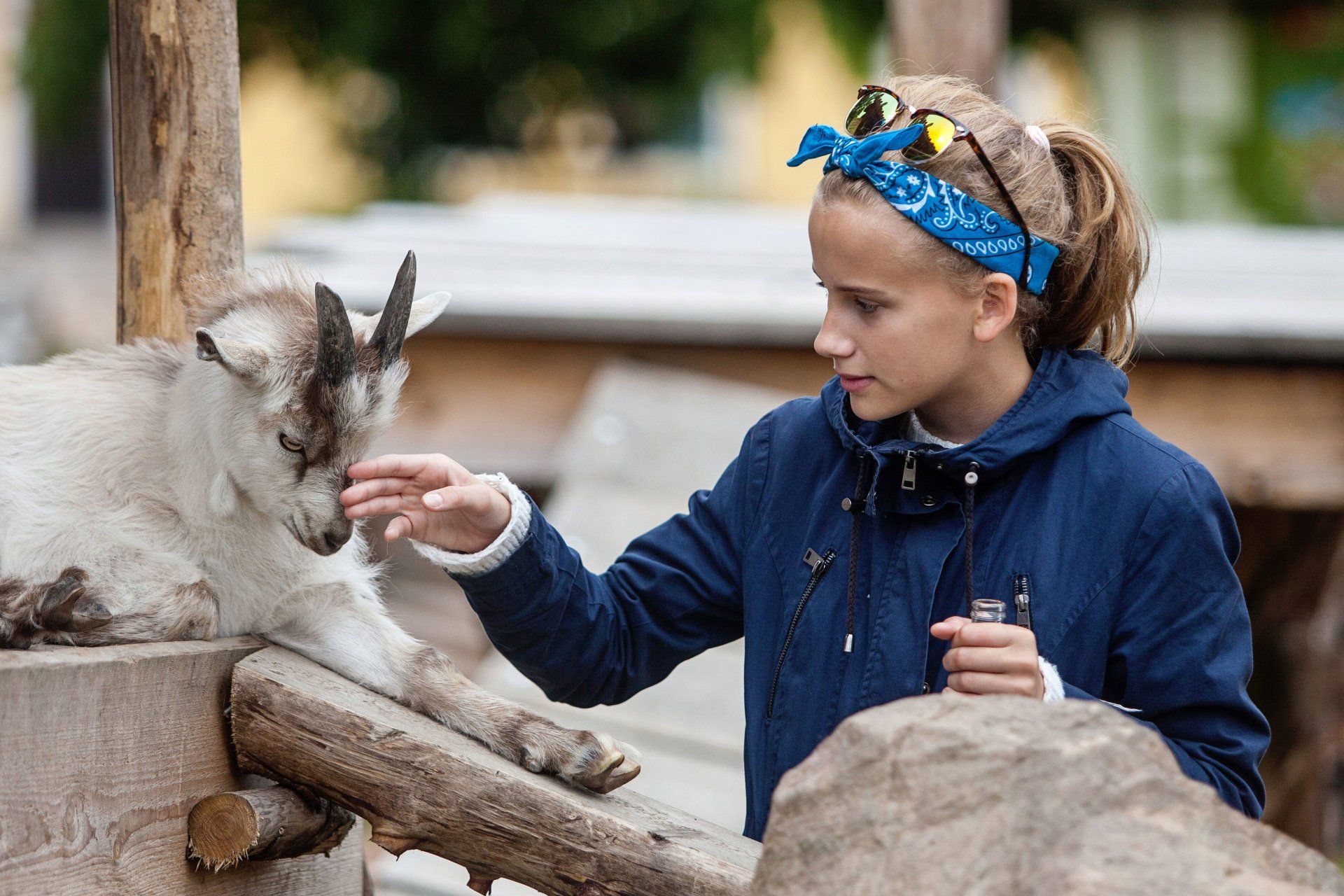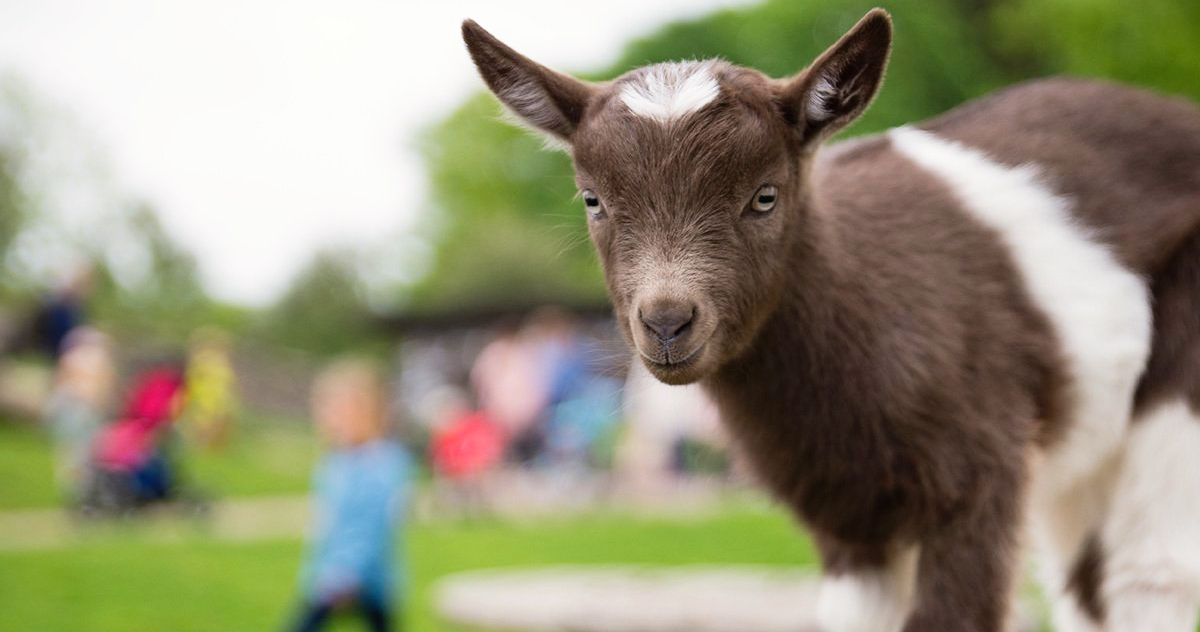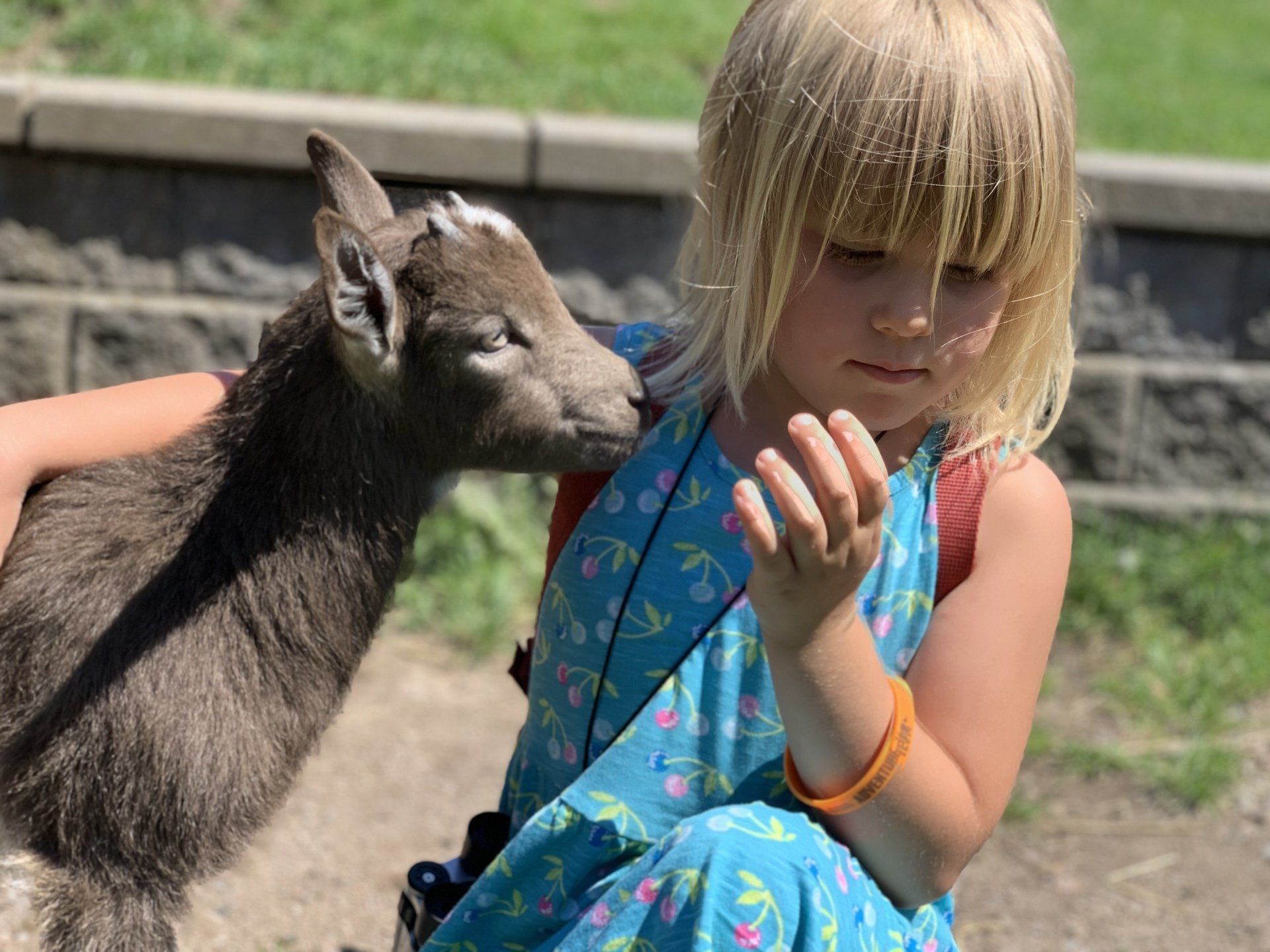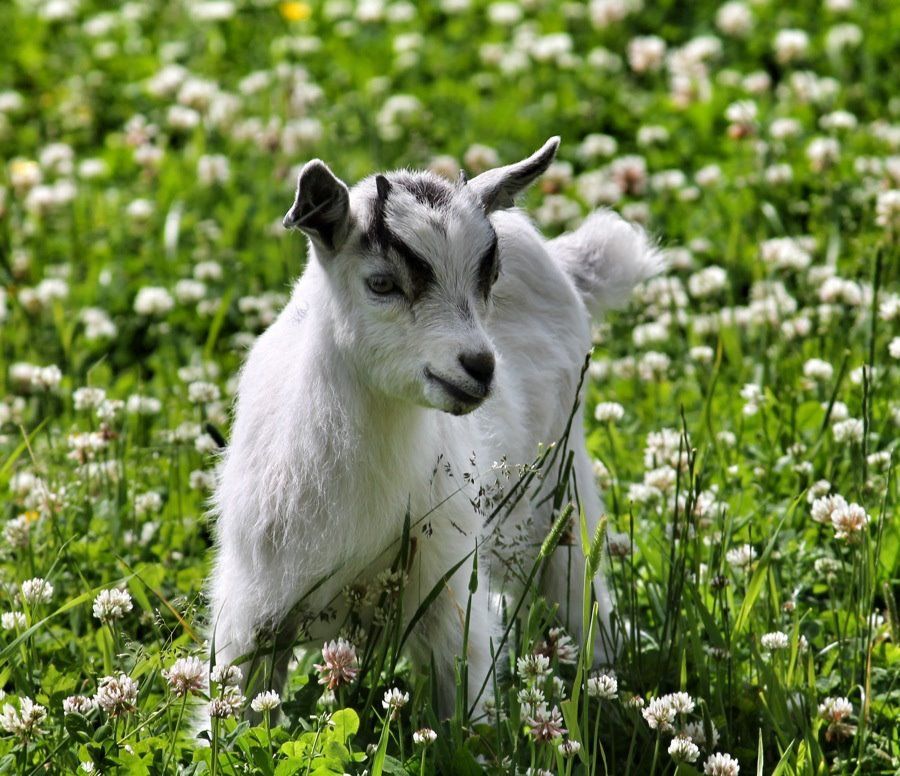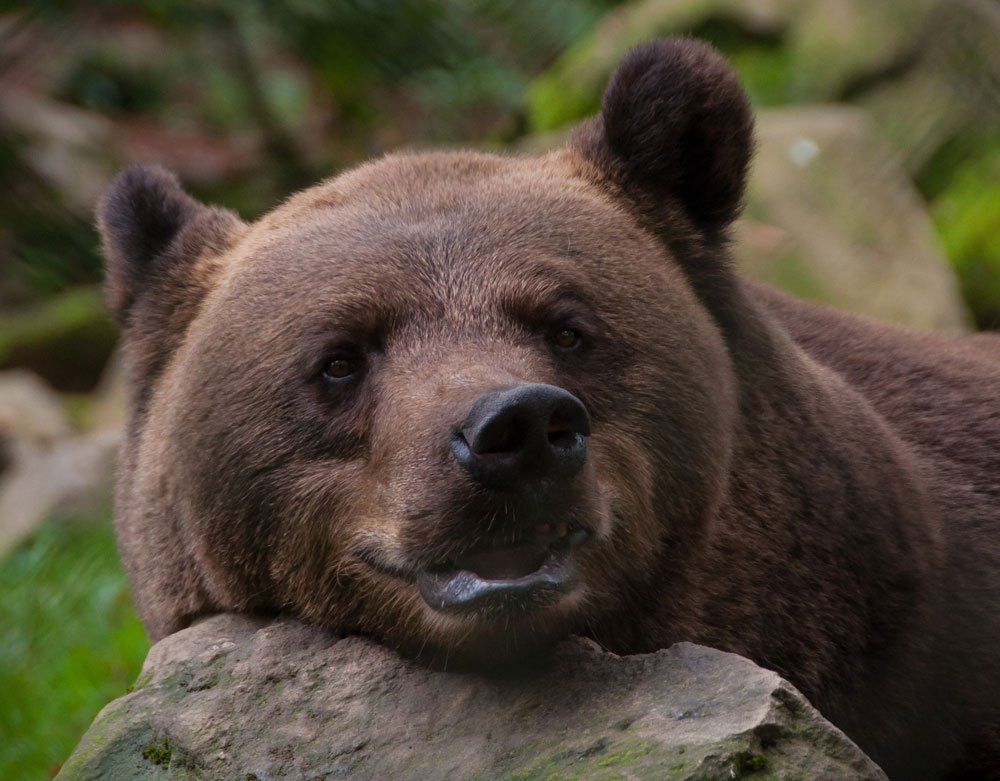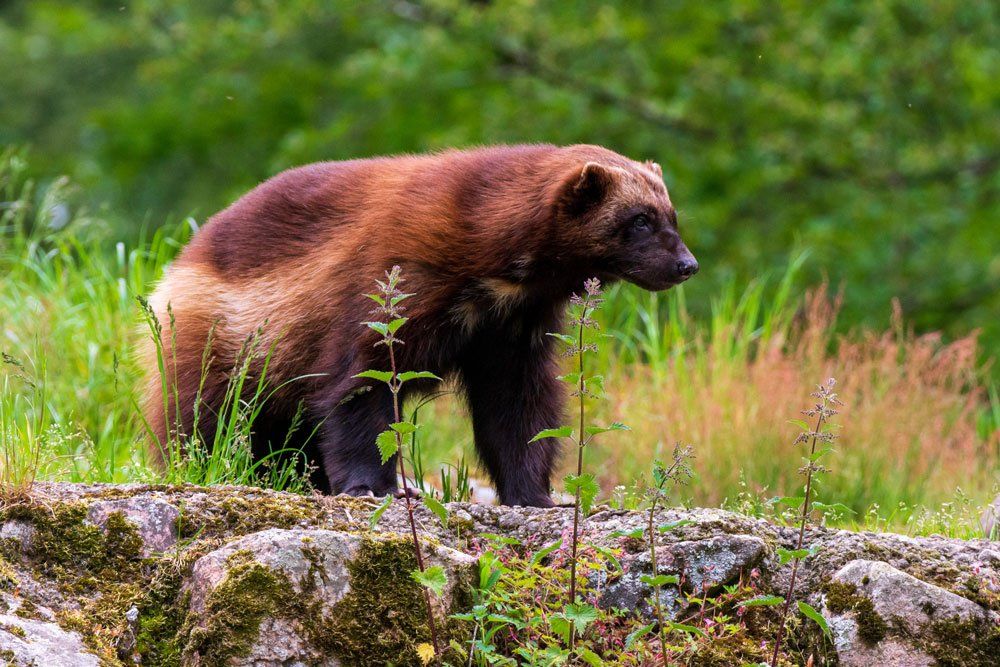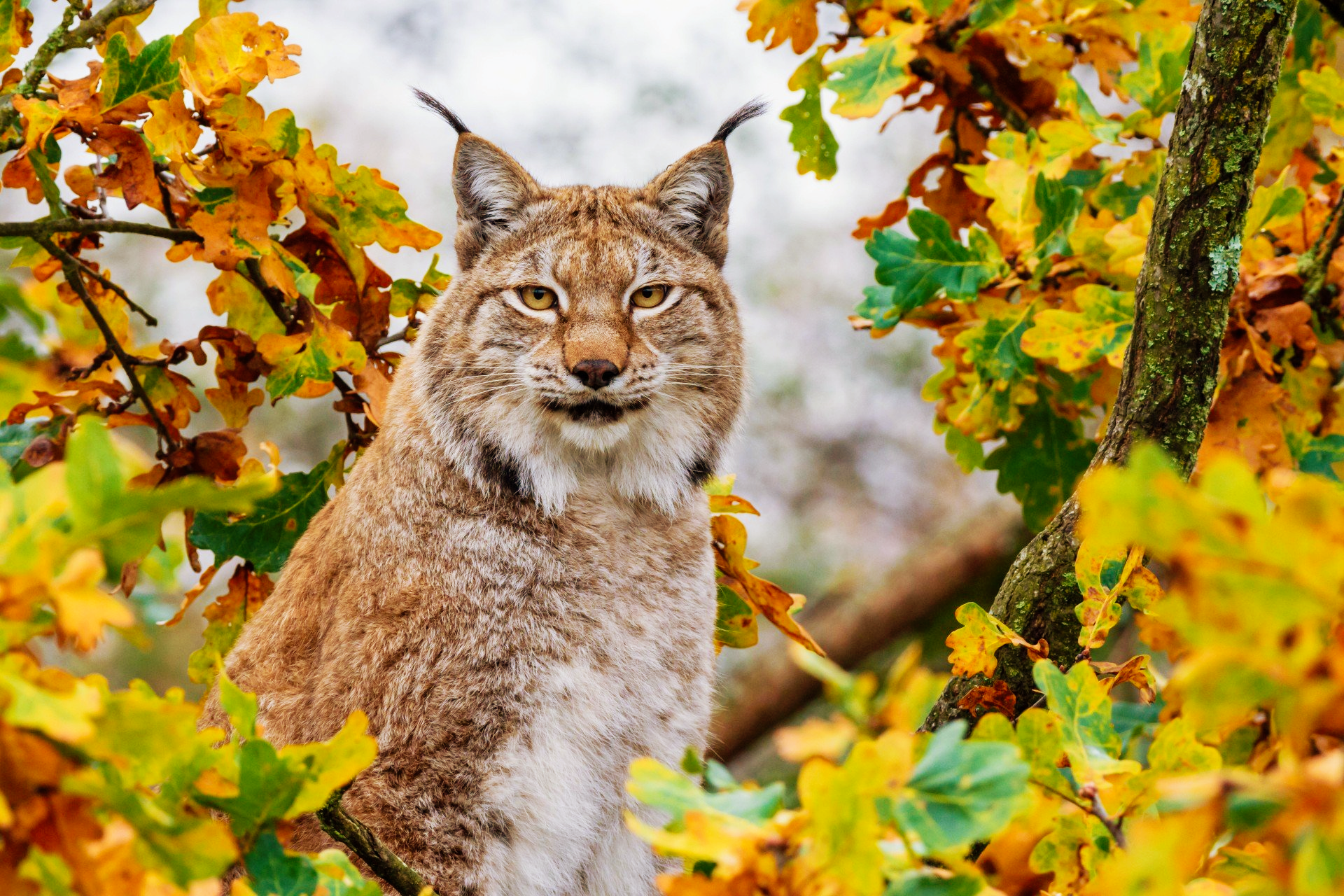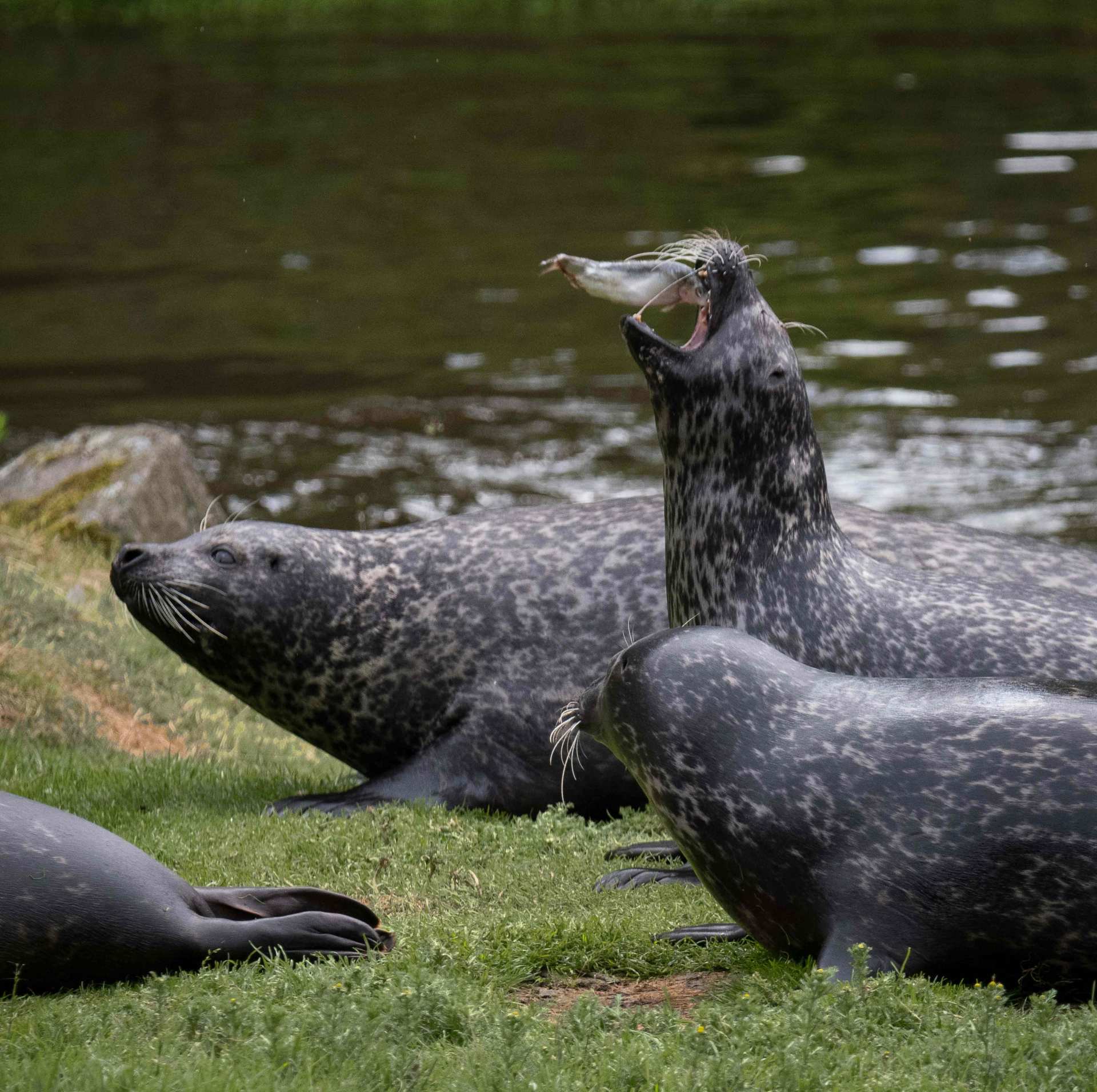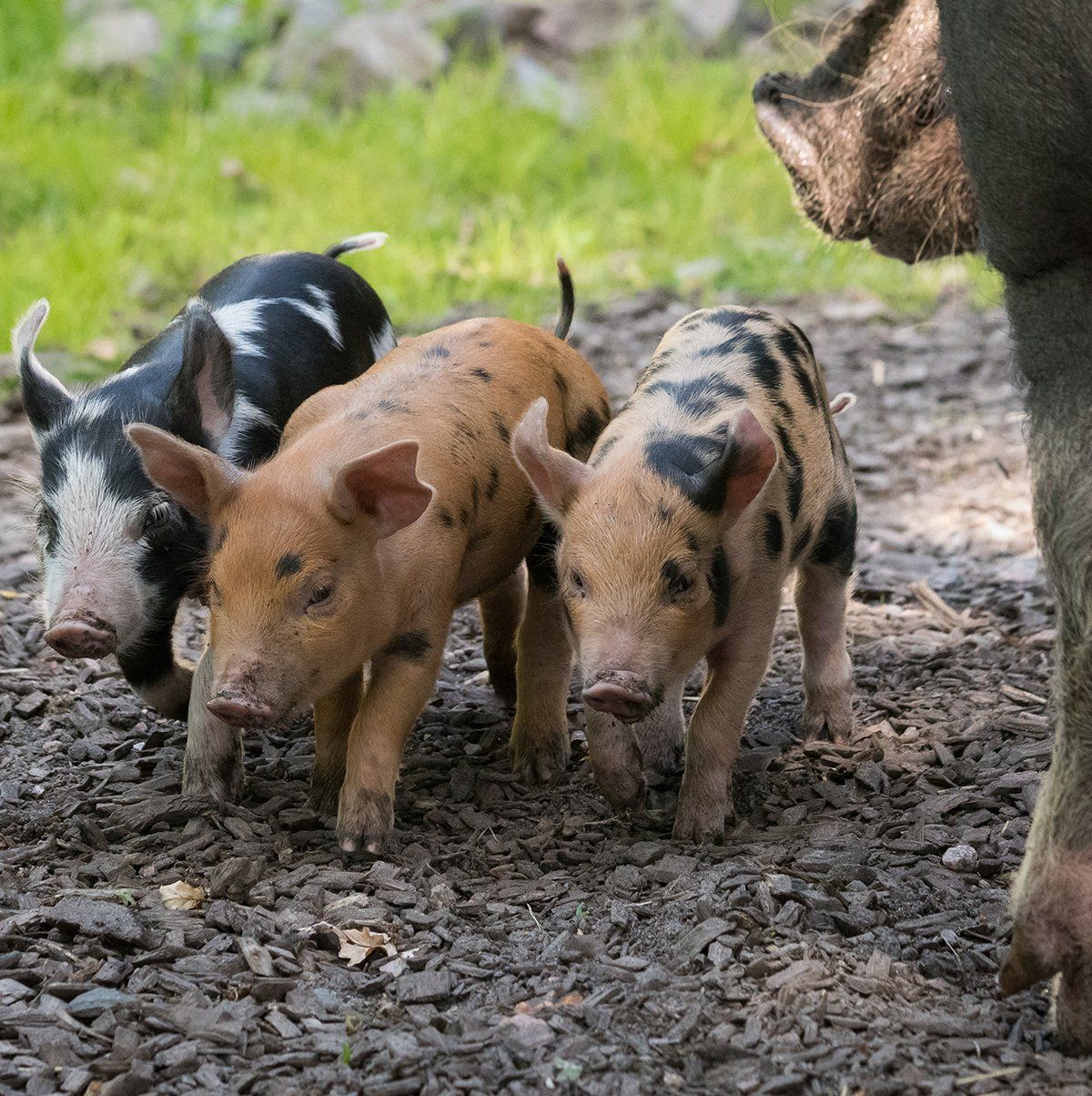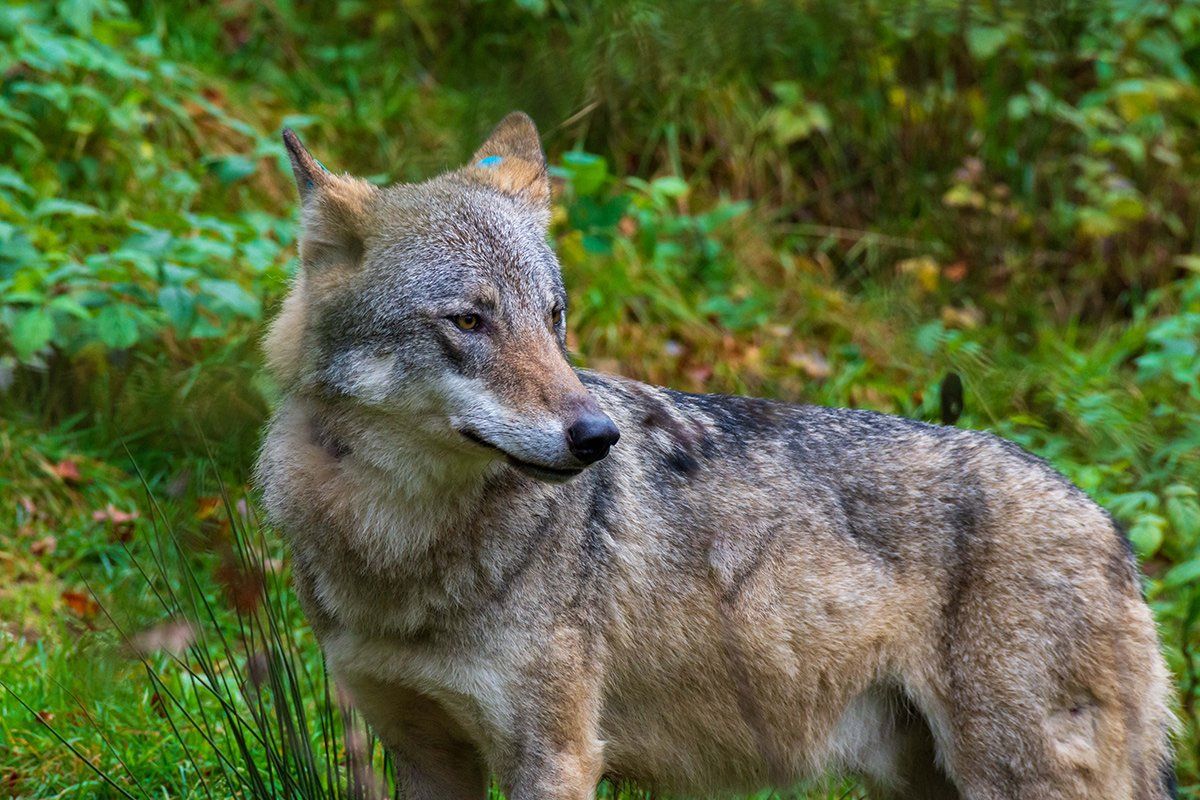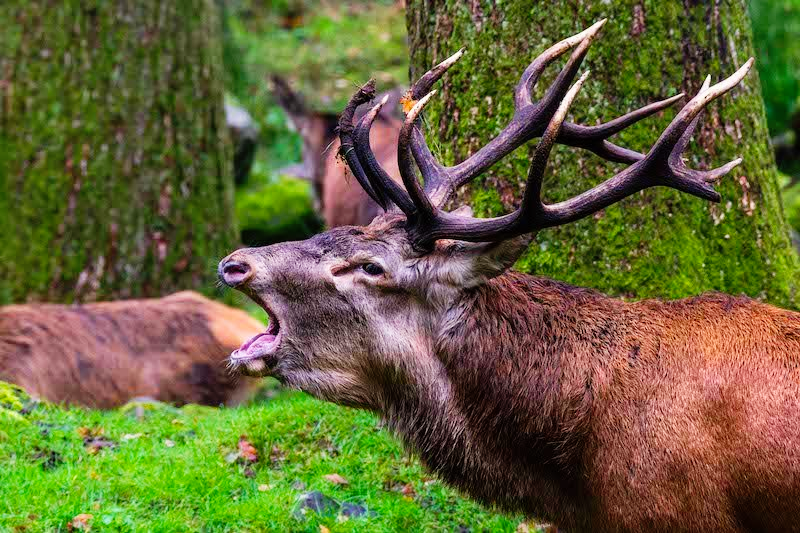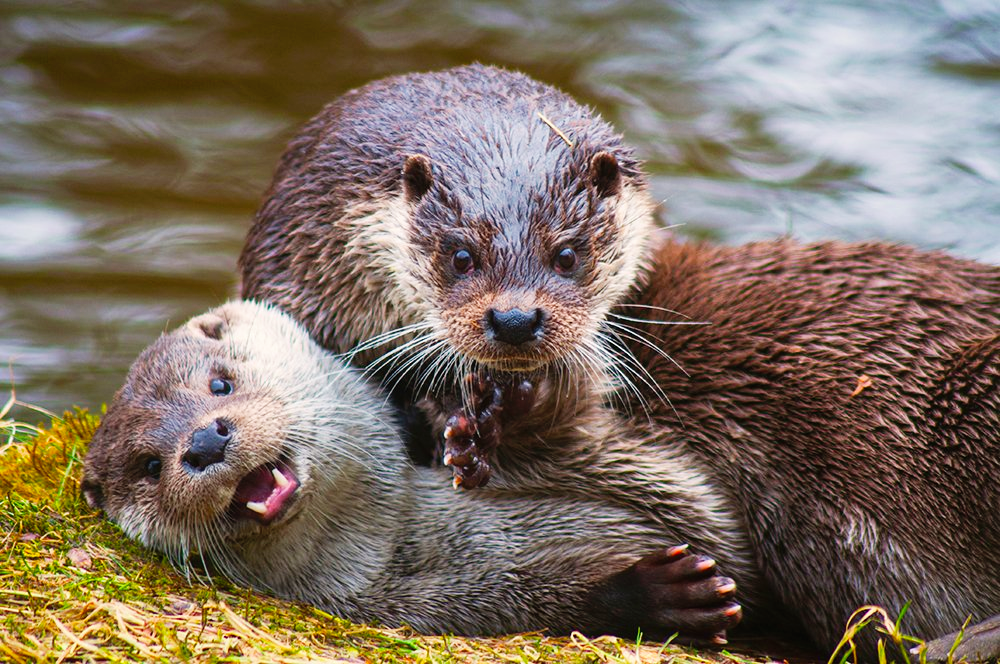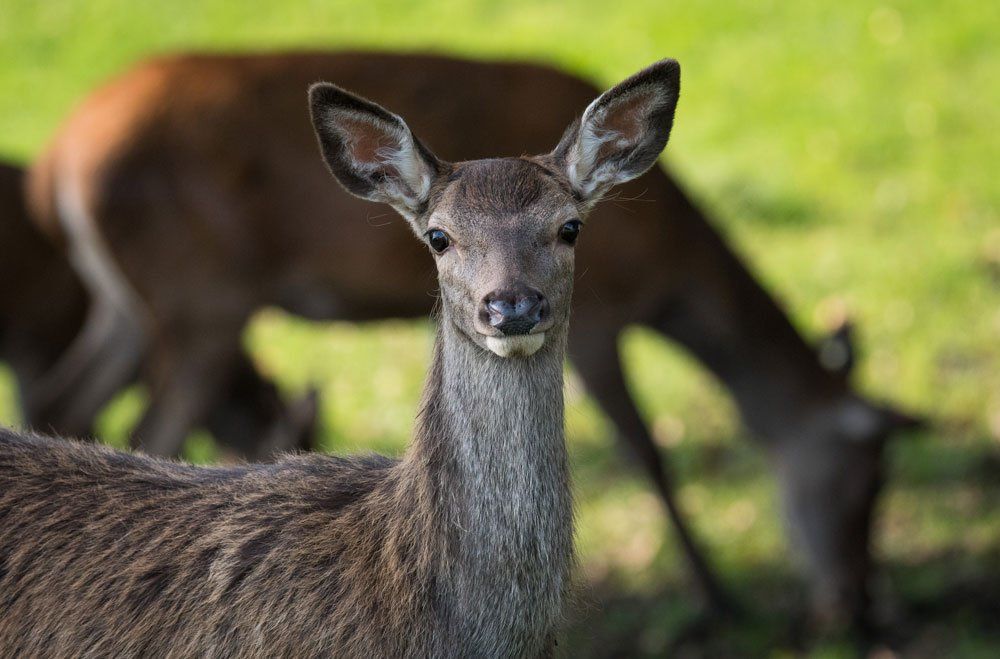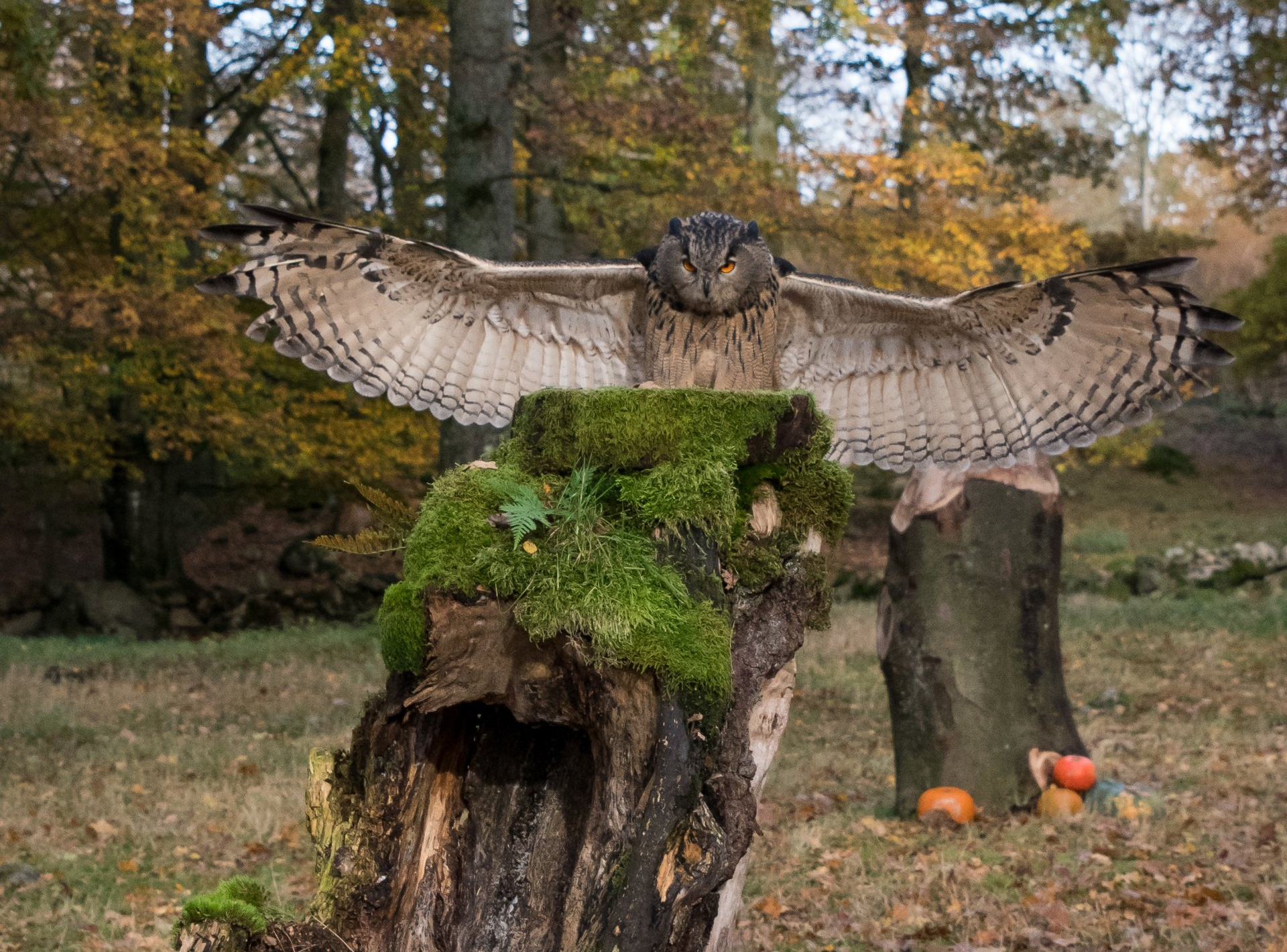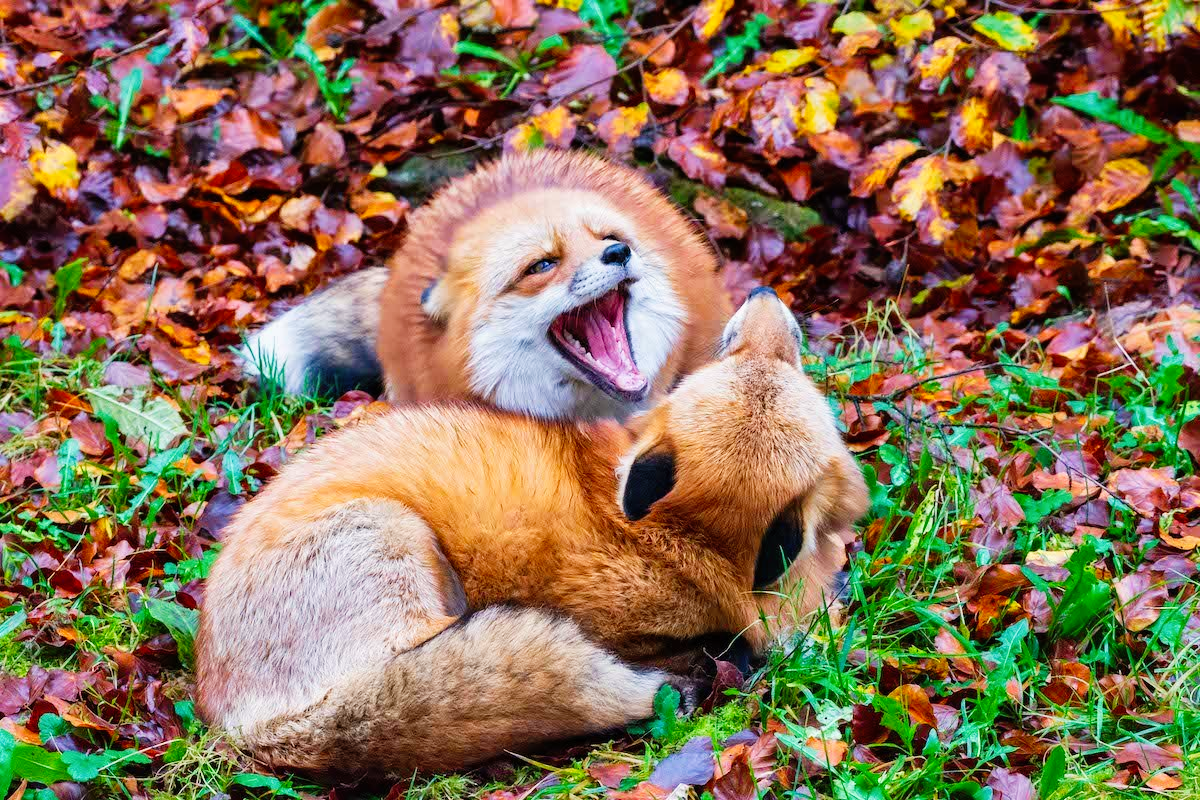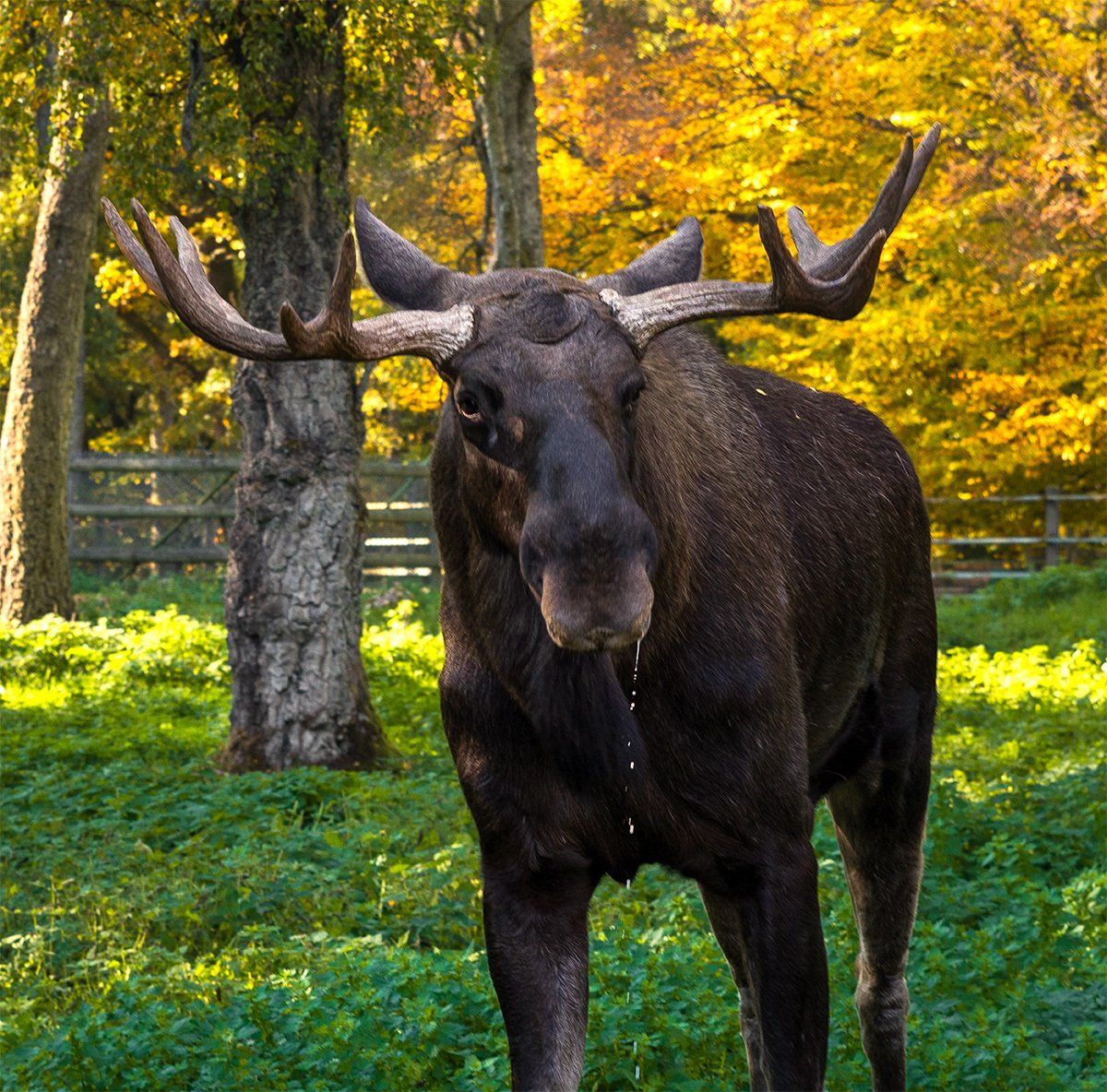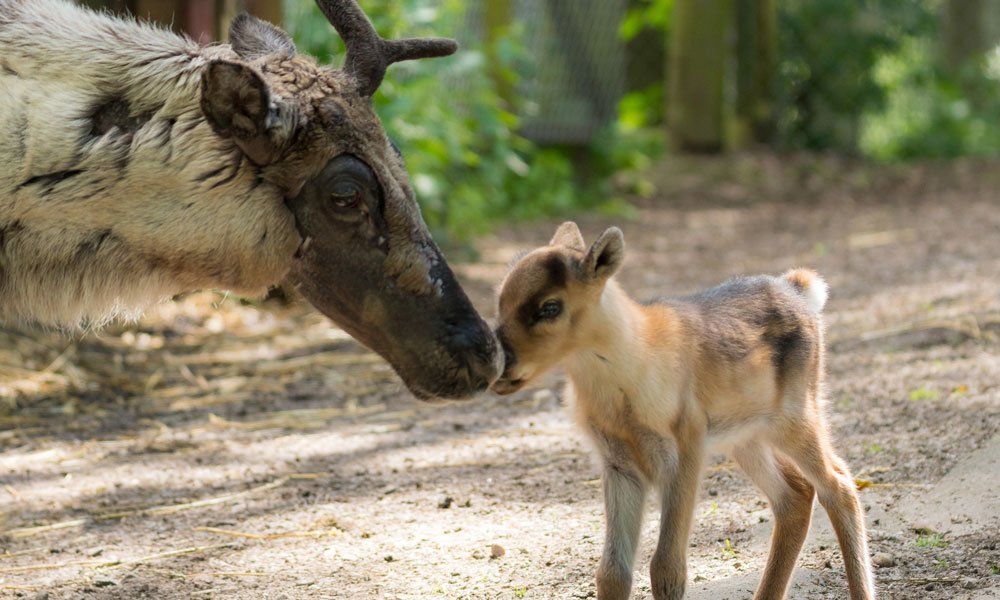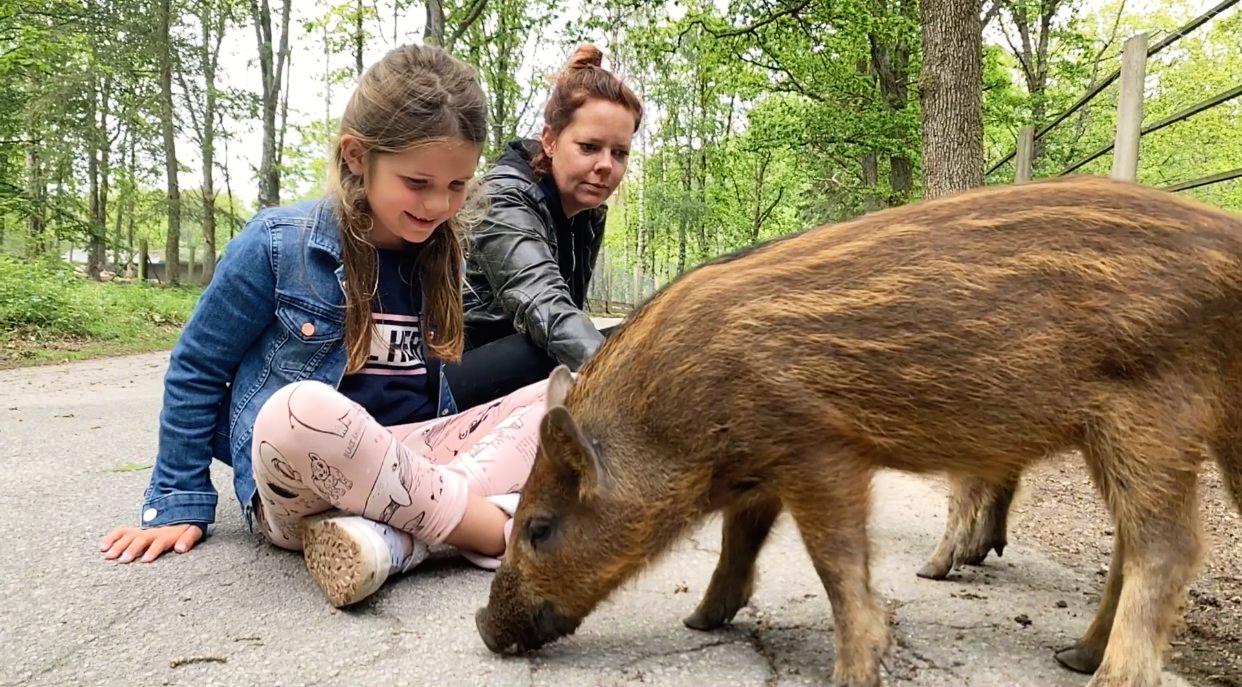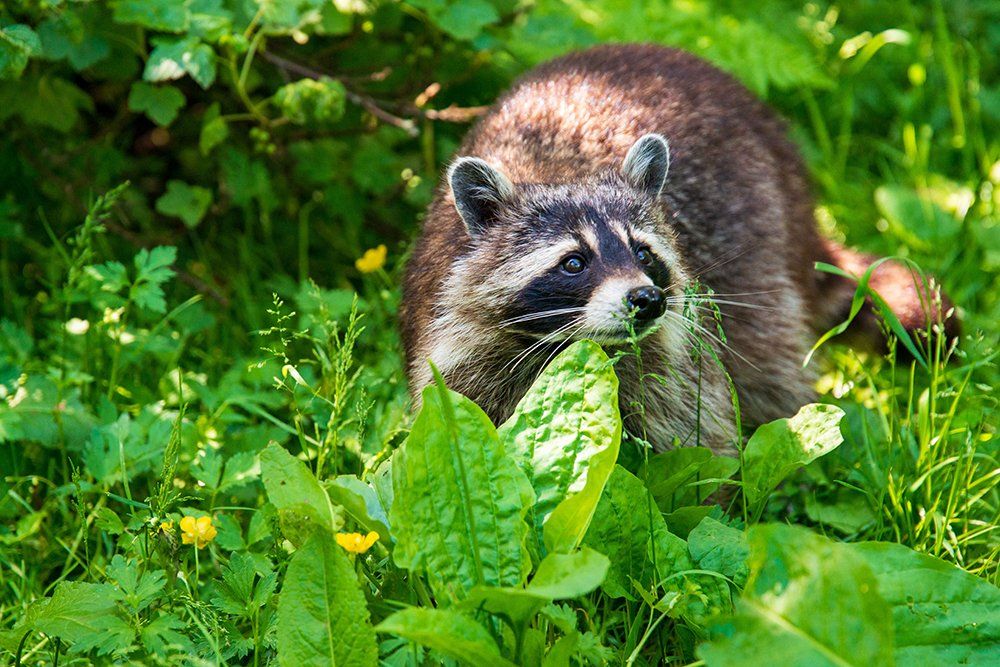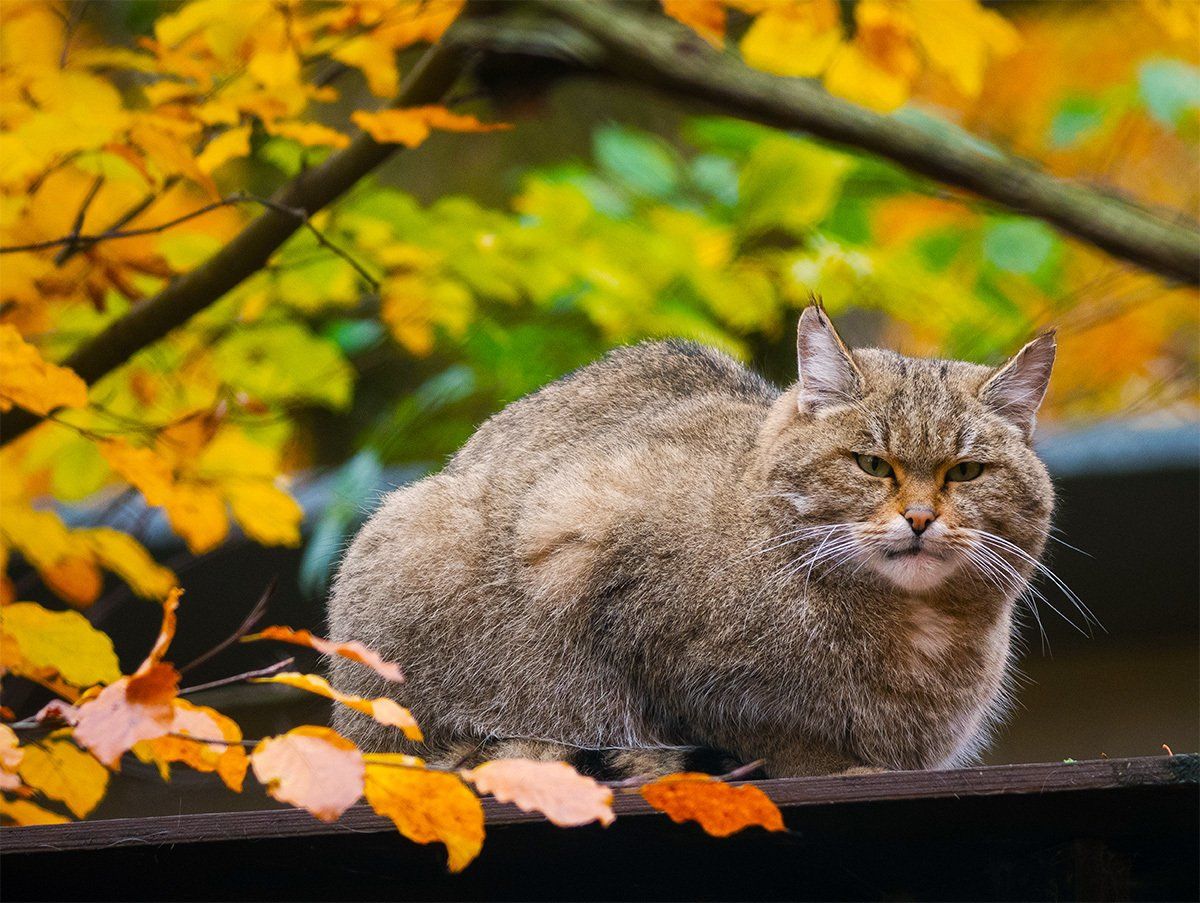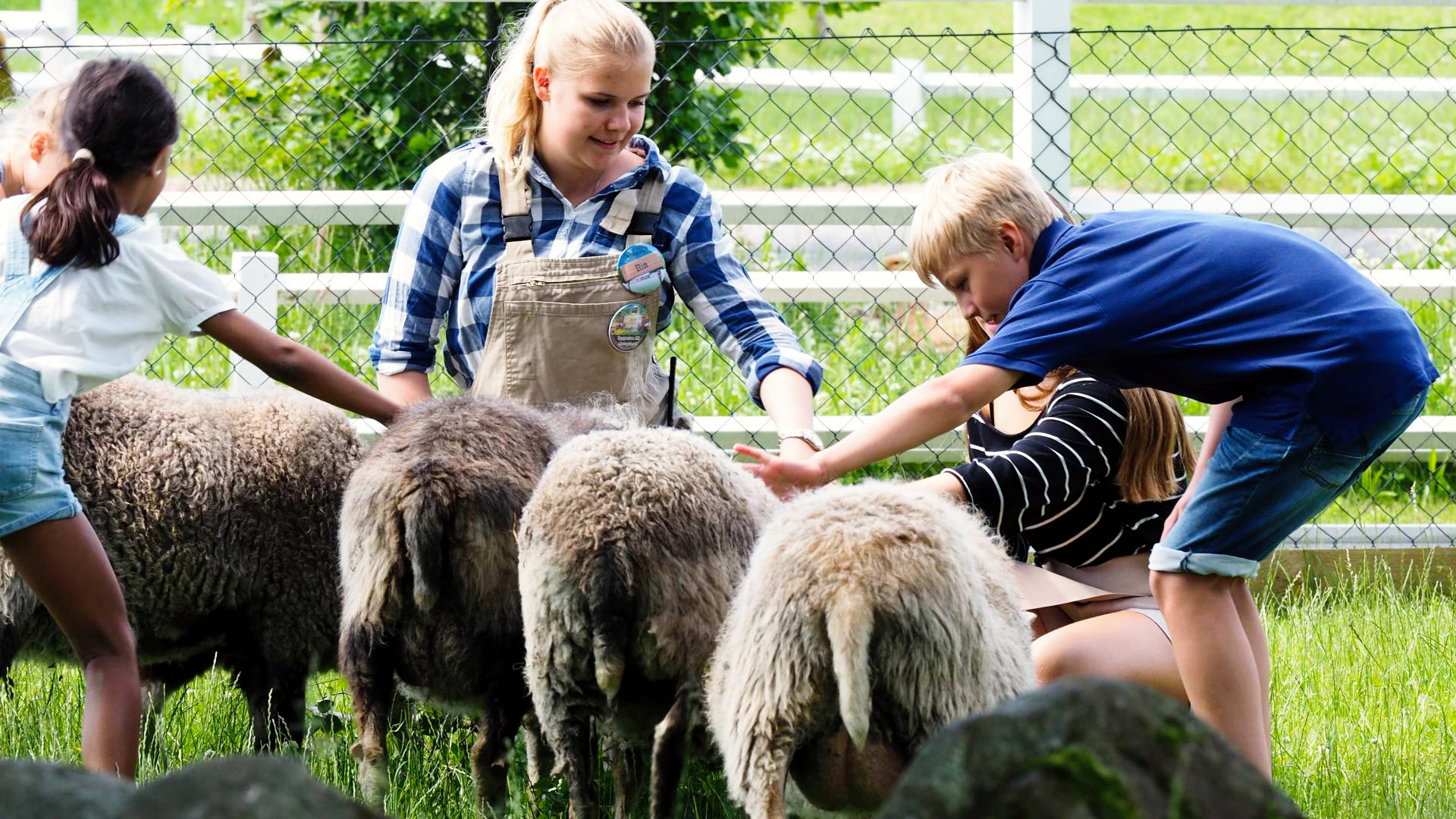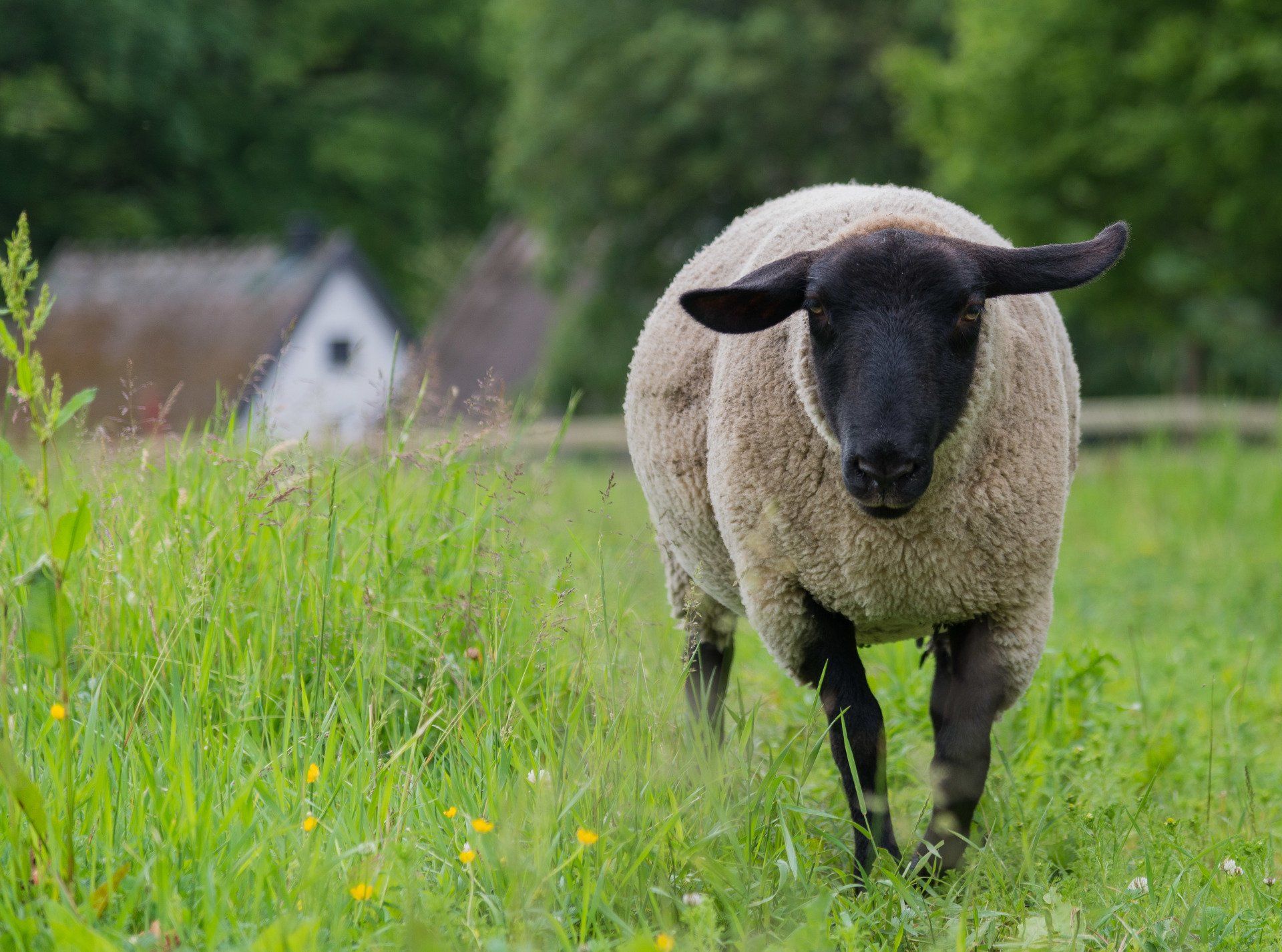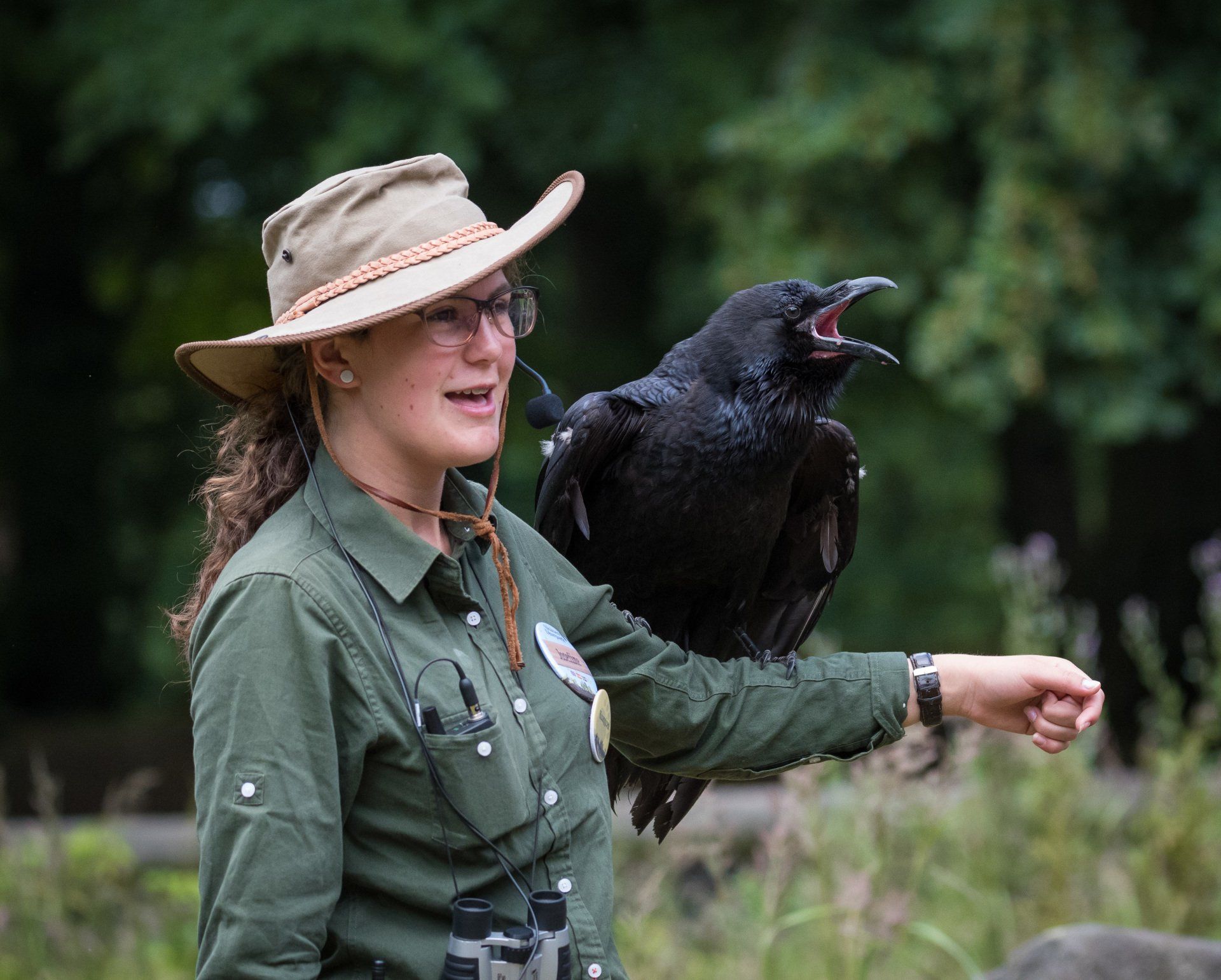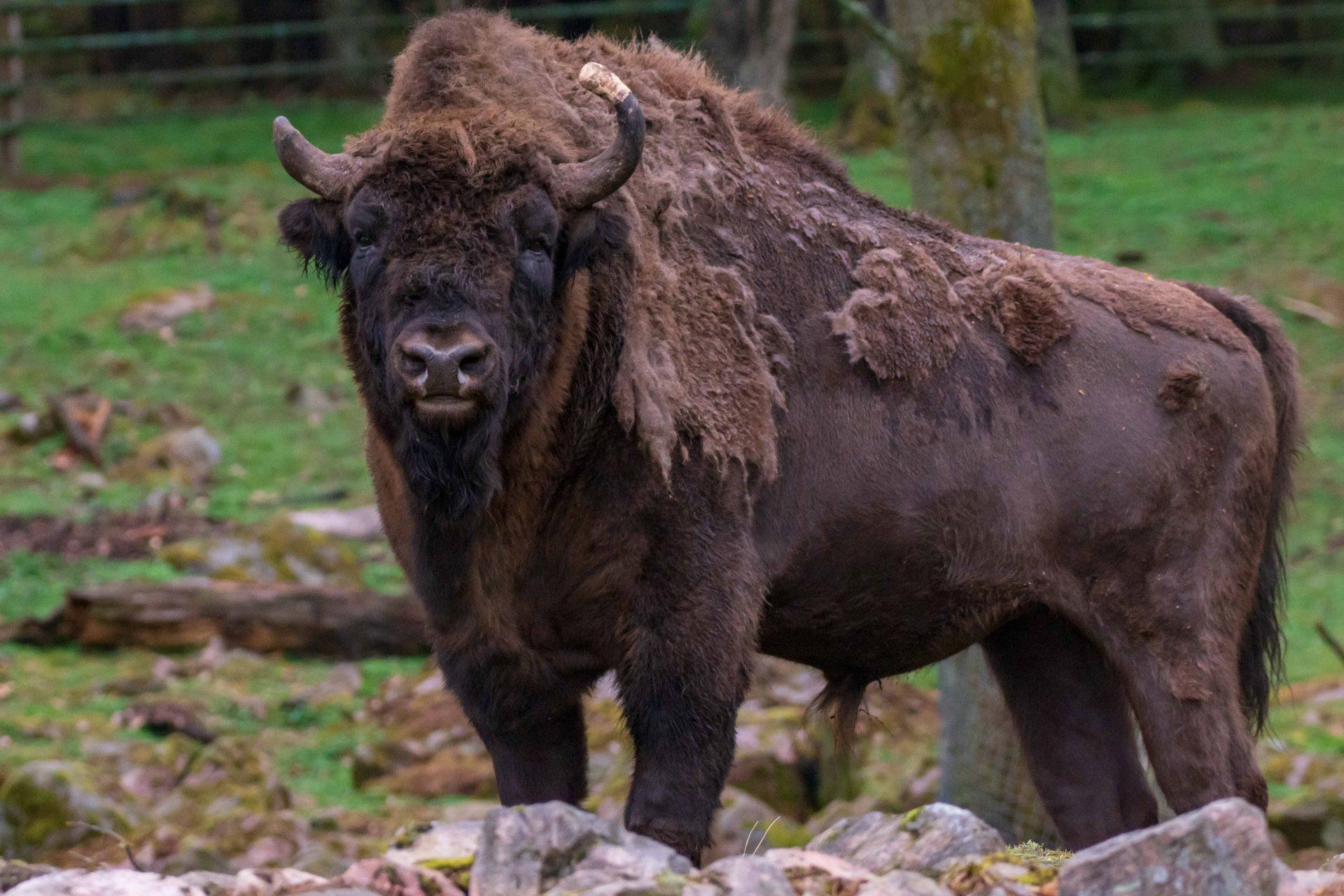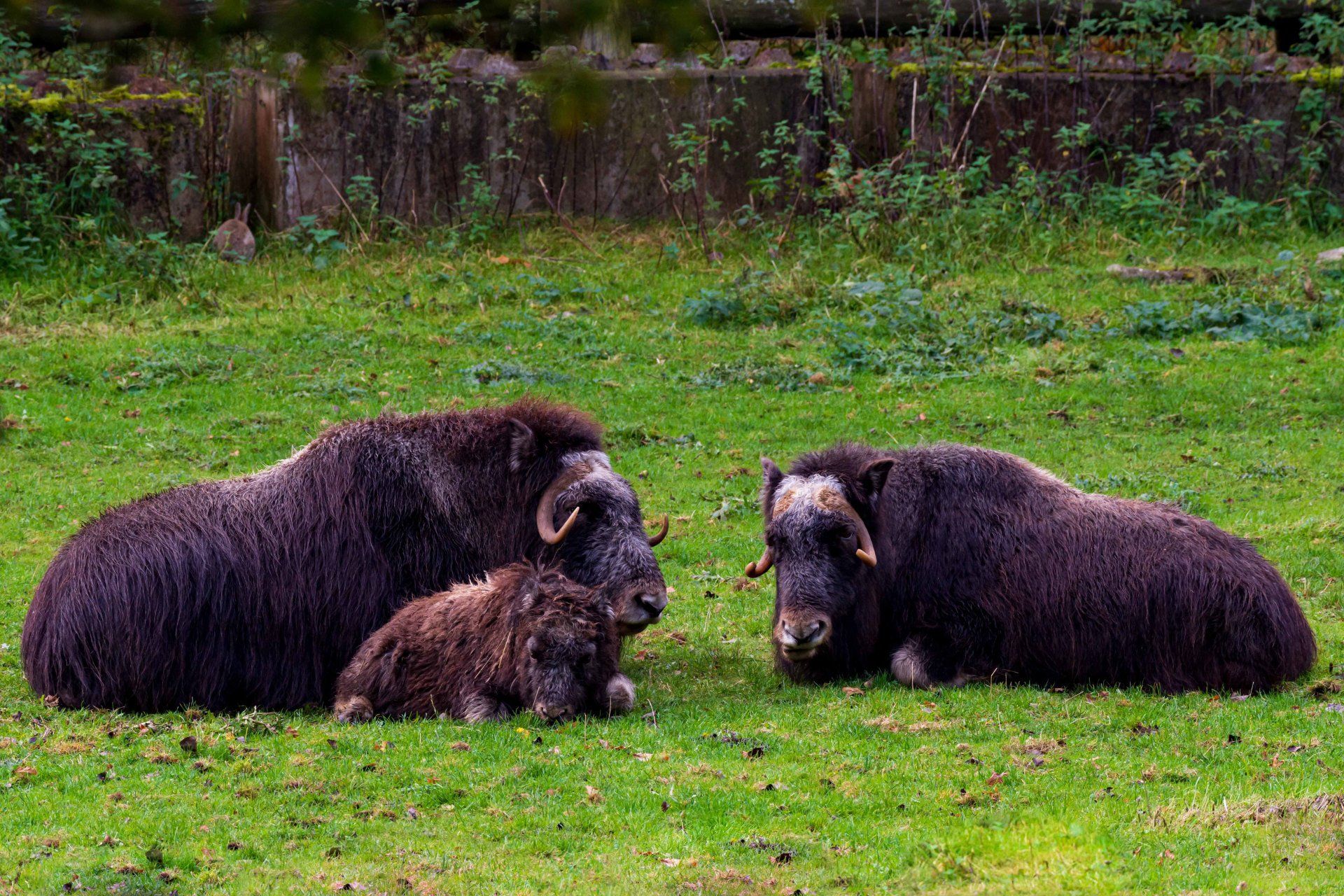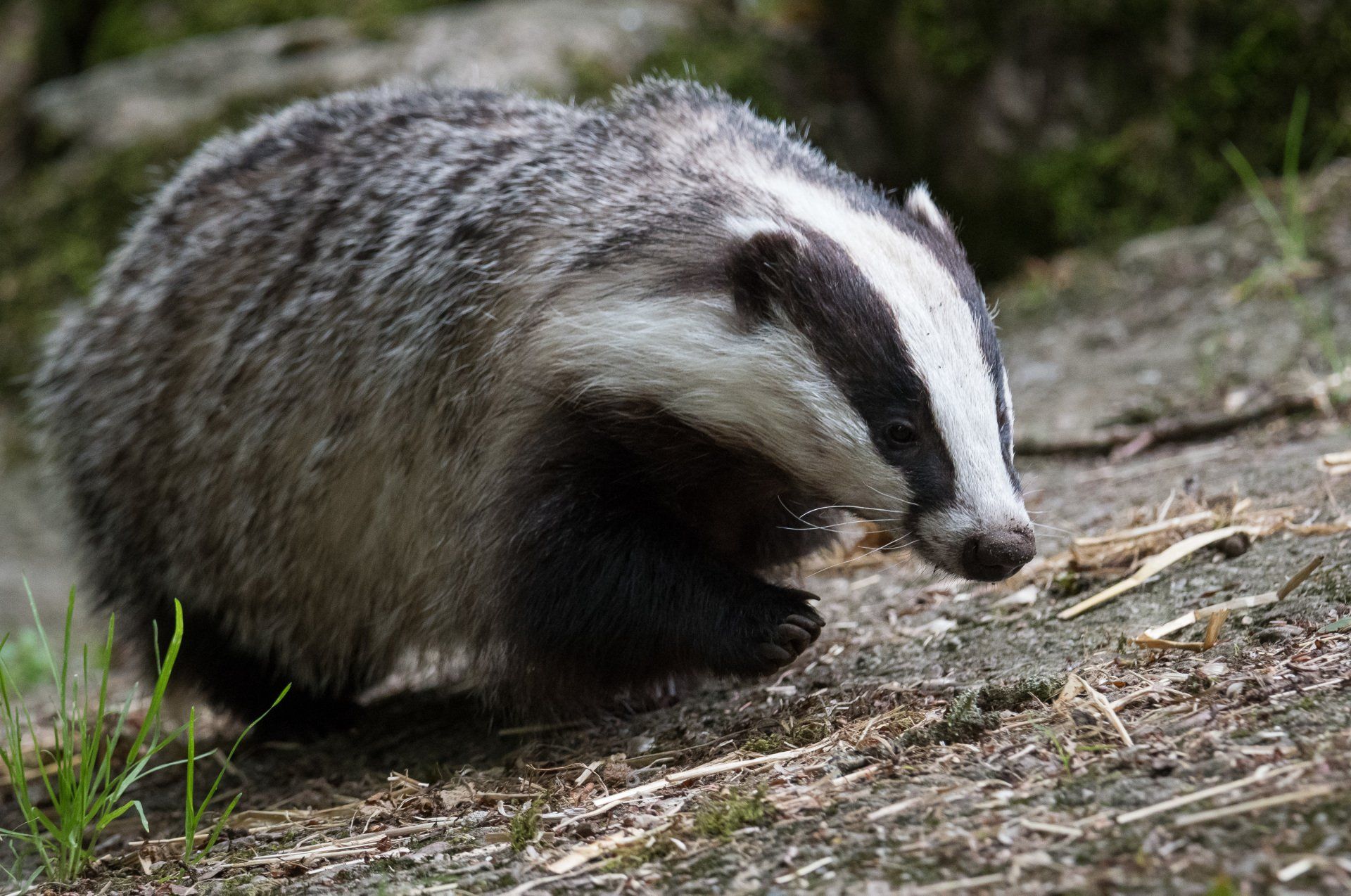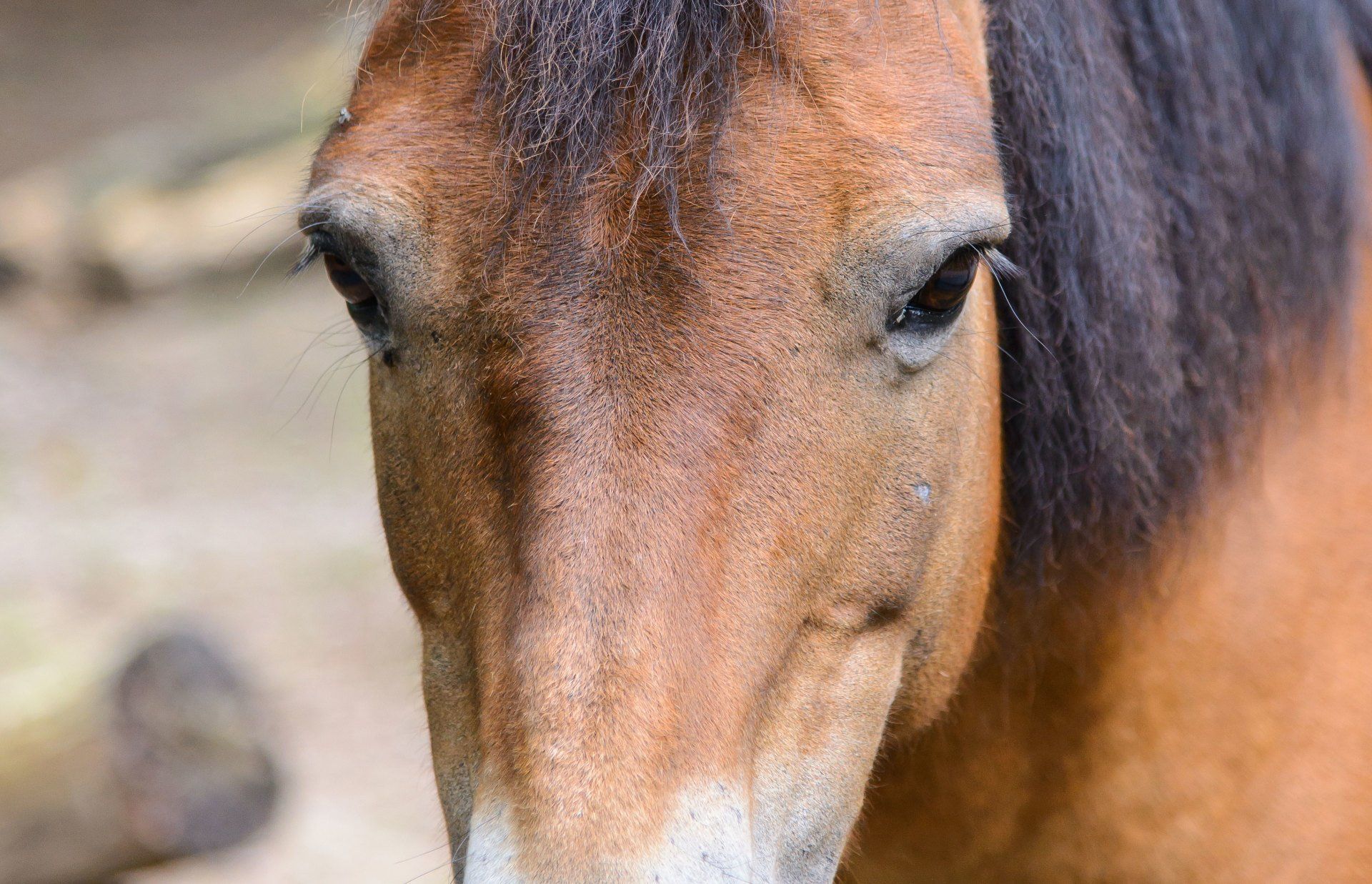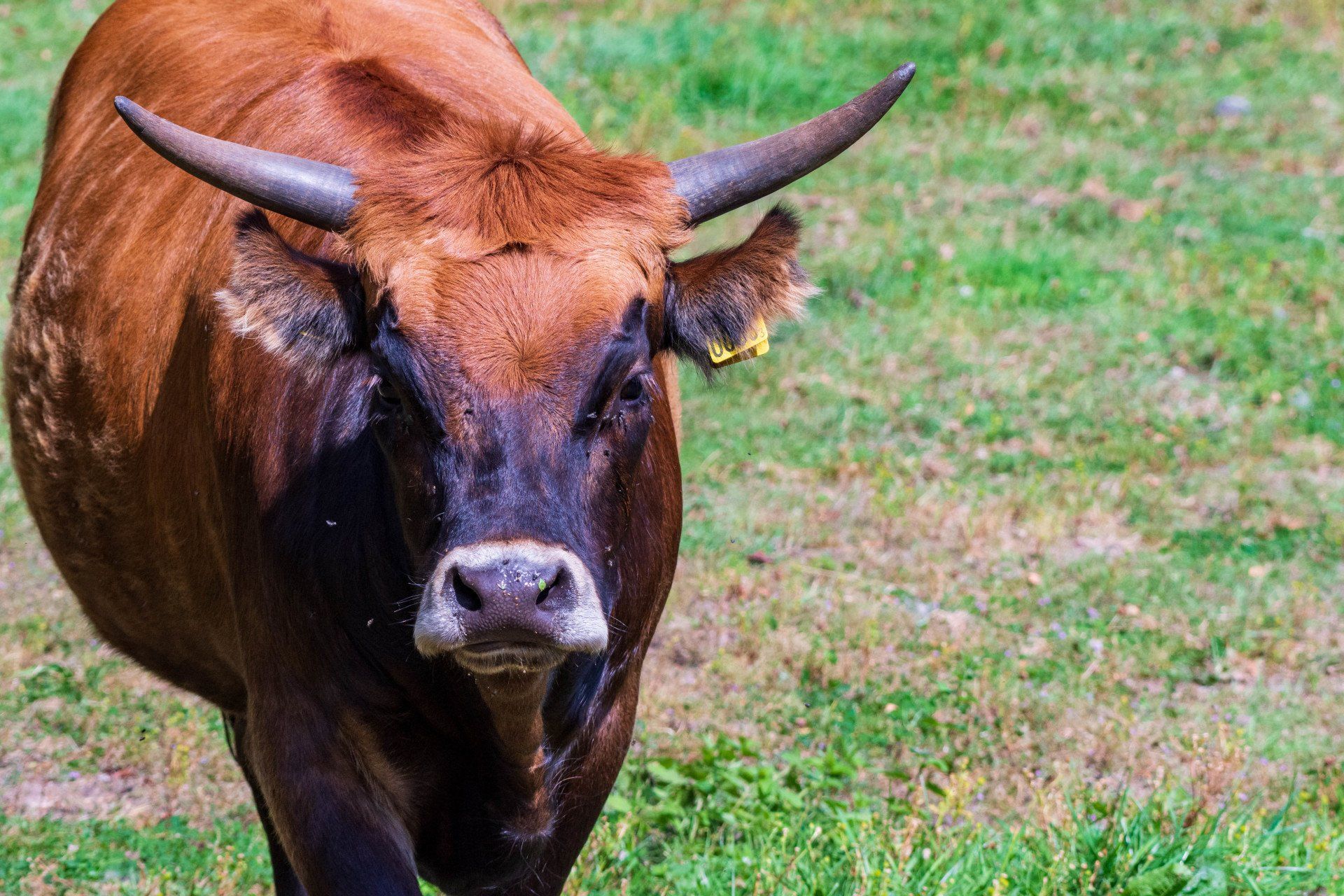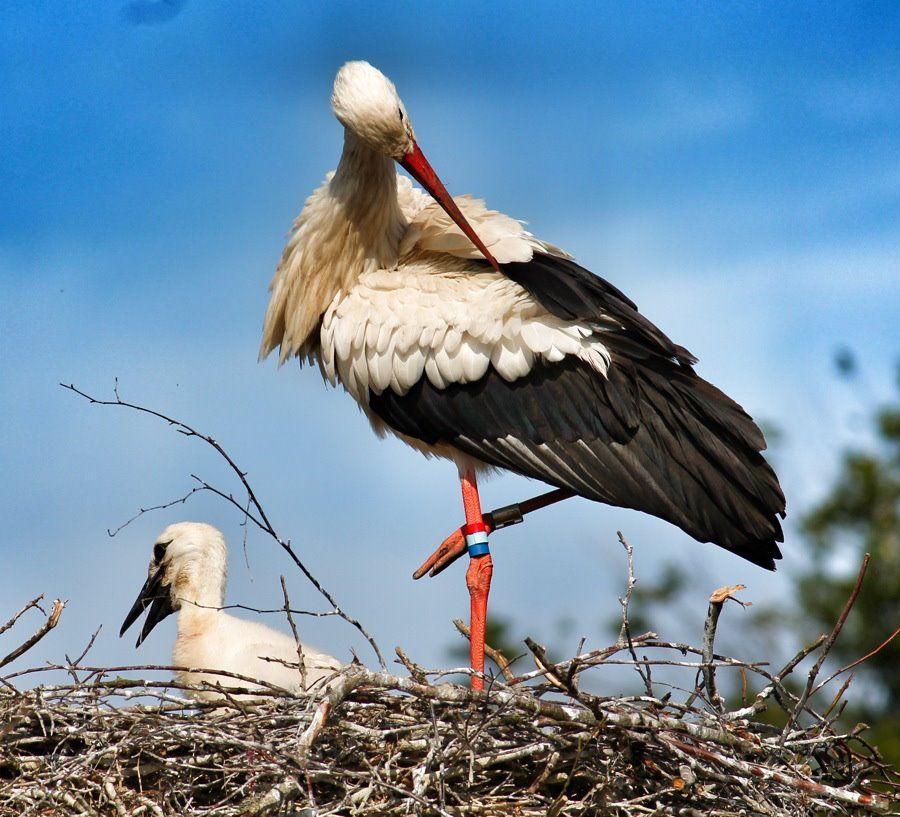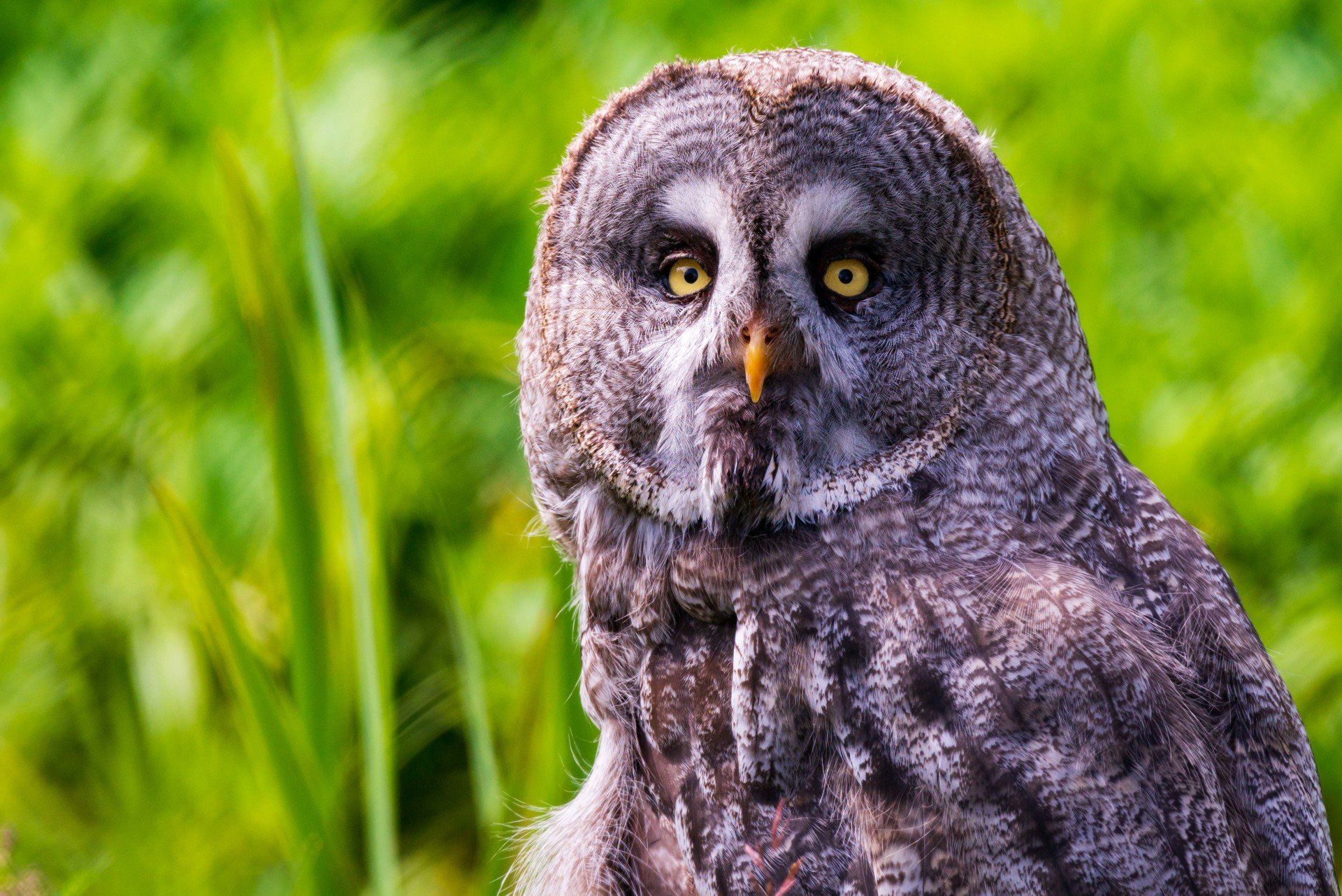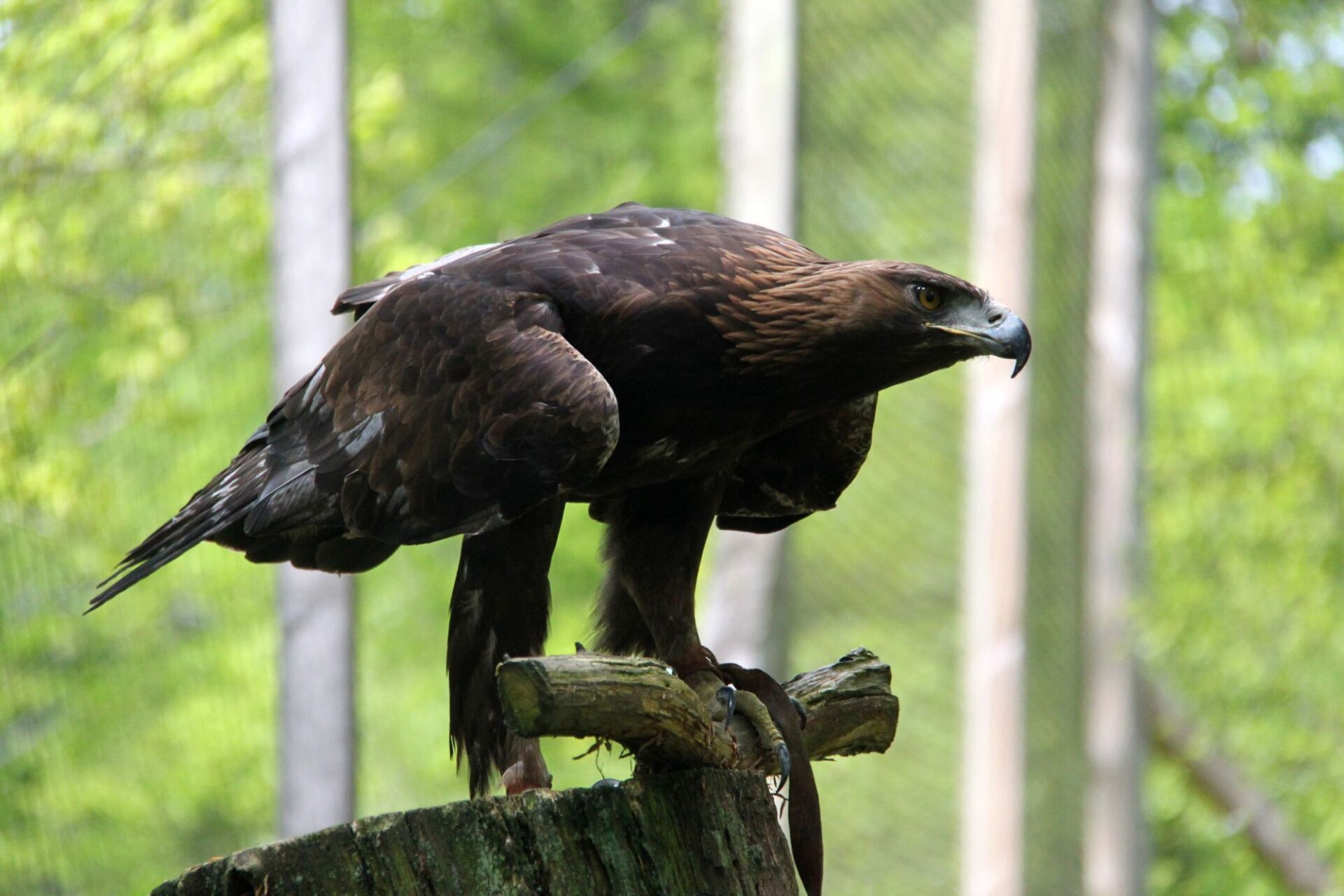FAKTA OM JÄMTGETEN
Latinskt namn: Capra hircus
Ordning: Partåiga hovdjur
Familj: Slidhornsdjur
Vikt: 35-65 kg
Föda: buskar, blad, grenar och bark
Familj: Slidhornsdjur
Vikt: 35-65 kg
Föda: buskar, blad, grenar och bark
Ålder: 10-12 år
Getterna i gethagen
The goats are social animals that like to come forward and allow themselves to be petted. Feel free to sit down for a while in the goat paddock and let yourself be amused by the goats jumping aroundaround stones, logs and bridges. The female animals are called goats and the male animals are called bucks.
The giant goat is small and agile
Jämtgeten är en liten och lätt get. Den är vit med bruna, grå eller svarta tecken och kan ha ryggål samt mörka tecken på ben, öron och ansikte. Hondjuren kallas getter och hangeten bockar. Både getter och bockar har horn, men bockarnas horn blir betydligt större. Getbockens horn kan vara meterlånga.
The goat - the poor man's cow
Today's Jämt goats are descended from the old land breed. The oldest secure find from a goat was made in Östergötland and is from about 2100 years before Christ. During the 18th century, goats were kept as pets all over Sweden. The goat was very important to poor people. When you couldn't afford to have a cow, you could manage to take care of a goat instead. The goat gave milk, cheese, meat and skin
